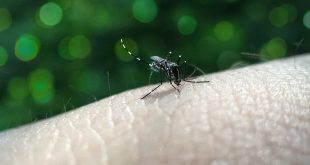Are you trying to protect your dogs from fleas and ticks using a commercial chemical treatment? If so, do you have any idea how safe it is to use?
If you had the slightest inkling that the product you choose to might adversely affect or even kill your pet, would you still use it – even if the chances were infinitesimal?

Dog lovers want to do the best for their animals. This includes feeding them with healthy food, keeping them clean, comfortable and happy, and ensuring they don’t become infested with ticks, fleas, and mites. So it will probably come as a shock to discover there is a certain type of broad-spectrum insecticide, manufactured in the form of a tasty chewable tablet, that not only kills fleas and ticks but can also kill your beloved animals.
A man-made chemical in a new chemical class that was introduced in about 2010, Insecticidal isoxazolines are classic synthetic pesticides now developed by at least four companies that produce veterinary medicines, including highly effective tick and flea treatments.
While this doesn’t necessarily mean that an isoxazoline-based product will have any type of negative effect on your pet, the U.S. Food and Drug Administration (FDA) has warned both veterinarians and pet owners about the potential adverse events in dogs and cats treated with drugs in the isoxazoline class.
But pesticides / insecticides / parasiticides – whatever you want to call them – are essentially poisons, and pet owners worldwide have been reporting that their animals have been getting sick after using isoxazoline products. Although no accurate statistics are currently available, some dogs died, which means the harsh reality is that isoxazolines can be lethal!
There are several Facebook groups that discuss isoxazonline products including:
- Bravecto Nexgard Comfortis Simparica Trifexis & others Do They Kill Dogs? The group, created by an Australian woman, Carol Dehm, in December 2017 that now has 4,563 members as at January 29, 2019, was formed so that pet owners could share stories about their use of any chemical flea treatments. There are numerous stories in the group that detail side effects and death.
- Bravecto Nexgard Comfortis Simparica Trifexis & others Do They Kill Dogs? A community group, also started by Carol Dehm, that has 1,260 followers. It was started by her to share information about chemical flea treatments and the possible effects they can have on pets.
- The Healing Vet from Queensland, Australia who has 7,722 followers, and who encourages dog owners to steer clear of chemical flea and tick products including collars that contain the same family of active ingredients. Many followers have shared their experiences on his page, including many whose beloved animals have died after being treated with chewable tablets to prevent and kill fleas and ticks.
If this has you are thinking that other tick and flea products will be safer to use than isoxazoline chew tabs, read till the end of this article. It might surprise you to learn that more than a decade ago, the U.S. Environmental Protection Agency (EPA) warned of the dangers of more than 70 spot-on tick and flea products, including seizures and death.
FDA Warning About Isoxazonline Products
In a public alert published on its website in September last year, the FDA’s Center for Veterinary Medicine warned that some animals had experienced “adverse events such as muscle tremors, ataxia, and seizures” after being given Bravecto, NexGard or Simparica for flea and tick infestations.

All three of these products, plus a fourth more recent product, Credelio, are all FDA-approved. This means that pet owners, in general, assume they are safe to use in accordance with the manufacturers’ instructions.
Although FDA scientists carefully evaluate an animal drug prior to approval, there is the potential for new information to emerge after marketing, when the product is used in a much larger population. In the first three years after approval, the FDA pays particularly close attention to adverse event reports, looking for any safety information that may emerge.
The FDA also made it clear that “animal drug sponsors” that own and have the right to market animal drugs, have a mandatory responsibility to report any serious, unexpected adverse events within 15 days of the event happening.
“The FDA carefully reviewed studies and other data on Bravecto, Credelio, Nexgard, and Simparica prior to approval, and these products continue to be safe and effective for the majority of animals.”
While the FDA has not withdrawn its approval of Bravecto, NexGard, Simparica, or Credelio, manufacturers have been asked to include new label information that highlights neurologic events, “because these events were seen consistently across the isoxazoline class of products.” No statistics were given.
Isoxazoline Insecticides
Insecticidal isoxazolines were first developed after the discovery of phthalic and anthranilic diamides for use against pest insects in agriculture in a new type of insecticide developed by companies like DuPont and Bayer from around 2007.
There are currently four drugs available internationally in the form of oral medications, all of which are in the isoxazoline class of veterinarian medication, and all presented as soft chew tablets.
Most isoxazoline treatments for dogs are formulated to kill fleas and ticks, both of which are parasites. But they may also be indicated for mites.
Although all four drugs are insecticides that work by attacking the nervous system of fleas and ticks to paralyze and kill them, the active ingredient in each of these is different. This is because they are not naturally-produced molecules, but rather man-made chemicals.
Furthermore, several companies that produce isoxazoline derivatives have filed patents to protect their specific products (see Chemical Composition of Chewable Isoxazoline Tablets below)
The resultant isoxazoline compounds have both insecticidal and acaricidal activities that can be used to kill insects as well as acari, a subclass of arachnids that includes ticks and mites. While acaricides are widely used in agriculture, this is the type of pesticide that is used to manufacture chewable tablets to prevent and treat flea and tick infestations.
The first veterinary product containing an isoxazoline was NexGard, launched in the US in late 2013. Bravecto followed early in 2014, and Simparica in March 2016. All four have been approved by the U.S. Food and Drug Administration (FDA) and are administered to dogs and puppies according to their weight.
- NexGard (afoxolaner) is manufactured by Merial, which is now part of Boehringer Ingelheim Animal Health, a global company headquartered in Germany. It is formulated to kill dog ticks of various kinds, including black-legged ticks. It was approved by the FDA in July 2013.
- Bravecto (fluralaner) is manufactured by Merck Animal Health (known as MSD Animal Health outside the US and Canada). In South Africa, MSD Animal Health operates as Intervet (Pty) Ltd. In Australia and New Zealand, Intervet trades as MSD Animal Health. Bravecto was approved by the FDA in May 2014 .
- Simparica (sarolaner) is manufactured by Zoetis internationally. It was approved by the FDA in February 2016. The European Medicines Agency has also approved its use, stating that “Simparica’s benefits are greater than its risks.”
- Credelio (lotilaner) is manufactured by Elanco Animal Health, a global company that is a division of Eli Lilly and Company, headquartered in Indiana, U.S. The product was first authorized in the EU in April 2017, and it received FDA approval in January 2018.
The manufacturers’ suggested dosing schedules for NexGard, Simparica, and Credelio are once a month and for Bravecto, once every three months.
As the FDA states in its Fact Sheet for Pet Owners and Veterinarians about Potential Adverse Events Associate with Isoxazoline Flea and Tick Products, there are many products that are available to prevent and treat the control of flea and tick infestations. They suggest discussing all the options with your veterinarian to be sure you choose a product that will be best for your pet.
Warnings From Manufacturers of Chewable Tick and Flea Medication
The manufacturers of isoxazoline chewable tablets for the oral treatment and prevention of tick and flea infestation all have some sort of warning on US package inserts and on their respective websites. Note that all those quoted here (except for NexGard South Africa) were accessed from the Internet and some might have been subsequently updated. However, clearly, inserts for all countries are not identical to those released in the U.S., and in some countries, warnings are not included at all.
- NexGard requires a prescription from a veterinarian in the U.S. Reported adverse reactions on the packaging insert are: vomiting and diarrhea, both sometimes with blood, dry or flaky skin, lethargy, and anorexia. In the pre-approval study, dogs with a history of seizures experienced a seizure after taking the medication. Additional side-effects were reported in July 2018 including severe itching (pruritus), dermatitis, allergic reactions, vomiting, diarrhea, anorexia, seizures, hyperactivity and restlessness, panting, erythema, ataxia, and tremors. The South African packaging insert (product purchased in January 2019) only mentions vomiting and diarrhea.
- Bravecto also requires a licensed veterinarian to prescribe the drug. The U.S. product insert lists vomiting, decreased appetite, diarrhea, lethargy, polydipsia (excessive thirst or drinking), and flatulence as reported adverse reactions. Bravecto updated its South African packaging insert in April 2018, stating that common adverse reactions including diarrhea, vomiting, drooling, and lack of appetite, but stated that they were “mild and transient.” Lethargy and convulsions had also been reported but were rare. The product inserts used in Australia and New Zealand have no warnings.
- Simparica, which requires a veterinarian’s prescription for use in the U.S., has been available since March 2016. The company reports that the most common adverse reactions are vomiting and diarrhea, although some dogs suffer from lethargy. The U.S. packaging insert also states that Simparica might “cause abnormal neurologic signs such as tremors, decreased conscious proprioception, ataxia, decreased or absent menace, and/or seizures.” According to the European Medicines Agency, side effects of Simparica are seen in less than 1:10,000 dogs and they are “mild and short-lived.” The Agency adds possible convulsions to the list above.
- Credelio requires a prescription from a veterinarian in the U.S., who is expected to carry out a routine check-up of the dog before prescribing it. The company states that the most frequently reported adverse reactions to the product are weight loss, diarrhea, excessive urination, and elevated blood urea nitrogen.
Chemical Composition of Chewable Isoxazoline Tablets
Chewable Isoxazoline tablets have a lot in common, but the chemical make-up and “chemical name” of each chemical brand is different.
- Bravecto, which is also manufactured in the form of a solution, has a number of inactive ingredients, namely dimethylacetamide, glycofurol, diethyltoluamide, acetone.Its active ingredient is fluralaner.
The chemical composition of fluralaner is (±)-4-[5-(3,5-dichlorophenyl)-5-(trifluoromethyl)-4,5-dihydroisoxazol-3-yl]-2-methyl-N-[2-oxo-2-(2,2,2-trifluoroethylamino) ethyl]benzamide.
- NexGard is, like the other three drugs in this list, a member of the isoxazoline family that attacks the central nervous system of insects and acarines. Its active ingredient is afoxolaner.
The chemical composition of afoxolaner is: 1-Naphthalenecarboxamide, 4-[5-[3-chloro-5-(trifluoromethyl)-phenyl]-4, 5-dihydro-5-(trifluoromethyl)-3-isoxazolyl]-N-[2-oxo-2-[(2,2,2-trifluoroethyl)amino]ethyl.
- Sarolaner, the chemical used to manufacture Simparica, is a member of the isoxazoline class of parasiticides and it contains the S-enantiomer of sarolaner.
The chemical composition of sarolaner is: 1-(5’-((5S)-5-(3,5-Dichloro-4-fluorophenyl)-5-(trifluoromethyl)-4,5-dihydroisoxazol-3-yl)-3’-H-spiro(azetidine-3,1’-(2)benzofuran)-1-yl)-2-(methylsulfonyl)ethanone.
- Credelio is described as a “member of the isoxazoline class of ectoparasiticides” and as a “potent insecticide and acaricide.” Its active ingredient is lotilaner.
The chemical composition of lotilaner is: 5-[(5S)-4,5-dihydro-5-(3,4,5-trichlorophenyl)- 5-(trifluoromethyl)-3-isoxazolyl]-3-methyl-N-[2-oxo-2-[(2,2,2-trifluoroethyl)amino]ethyl]- 2-thiophenecarboxamide.
Even if you aren’t a scientist and have never studied chemistry, you will see that the active ingredients in these chemical animal drugs are not the same as each another. This is how the manufacturing companies that produce isoxazoline derivatives have been able to file patents to protect their specific products.
Published Research Related to Flea and Tick Treatments
As is customary with all pharmaceutical products, manufacturers of chewable flea and tick tablets have funded and published research about their products. Some have international authors.
Below are a few examples.
A possible issue with at least some of these studies could be that they were conducted prior to getting FDA approval. Once an increasing number of dog owners started using the products, any number of adverse events might have occurred, including death. But not all companies update the information, and certainly not always internationally.
NexGard Research
The manufacturers of NexGard have included results from a “well-controlled” U.S. field study on its US packaging insert. A total of 615 dogs from 333 households were included in the study, with 415 receiving afoxolaner.
While Merial states on the insert that no serious adverse reactions were observed, there were side effects (see above Warnings From Manufacturers of Chewable Tick and Flea Medication).
Additionally, one dog with a history of seizures had seizures every day it received NexGard but did complete the study. Another dog, also with a history of seizures, had a seizure 19 days after being given a third dose. By contrast, a third dog that had a history of seizures didn’t experience any seizures during the study.
An open access study report, Discovery and mode of action of afoxolaner, a new isoxazoline paristicide for dogs was published in Elsevier Publishing’s Veterinary Parasitology Volume 201 in April 2014 and online by ScienceDirect. The study, funded by DuPont Crop Protection, Delaware, and Merial Limited that manufactures NexGard, had 16 contributing authors all employed by, or contracted to, DuPont.
The study considered the efficacy of animal drugs to kill both fleas and ticks, as well as long-term efficacy. The authors specifically studied the then very new class of potent ectoparasiticides including afoxolaner (their product) and fluralaner, made by MSD Animal Health.
For the purposes of the study, afoxolaner was given to the dogs in the form of an oral solution, administered by syringe, rather than as a chewy “treat.”
Clinical observations for adverse reactions were performed regularly throughout the study, and the study found that afoxolaner provided safe, effective treatment against fleas and ticks for at least a month after oral administration.
Another study, Efficacy of oral afoxolaner for the treatment of canine generalized demodicosis was published online on the NIH’s NCBI PMC website in 2016.
The authors were:
- Frédéric Beugnet, Merial France
- Lénaïg Halos, Merial France
- Diane Larson, Merial France
- Christa de Vos, ClinVet International (Pty) Ltd, Bloemfontein, South Africa, an independent contract research organization
Already proven to be very effective against ticks and fleas, the authors wanted to ascertain if it would be effective in countering mange caused by mites.
NexGard reduced mite numbers rapidly and resulted in a marked improvement in the condition of all dogs participating in the study. There were no adverse events as a result of the treatment.
Bravecto Research
The manufacturers of Bravecto have included results from a “well-controlled” U.S. field study on its US packaging insert.
A total of 294 dogs were included in the study, 224 of which were given Bravecto oral control and made to wear a tick collar. The most common side effect in both the active control group and the Bravecto group was vomiting. Additionally, in a “well-controlled” laboratory dose confirmation study, one dog developed edema and hyperemia of its upper lip less than an hour after being dosed with Bravecto. The condition improved the same day and no medical intervention was needed.
Five people from MSD Animal Health in Germany contributed to a paper, The novel isoxazoline extoparasiticide fluralaner: Selective inhibition of arthropod y-aminobutyric acid- and L-glutamate-gated chloride channels and insecticidal/acaricidal activity that was published in Elsevier Publishing’s Biology Volume 45 in February 2014 and online by ScienceDirect. The focus was on cat fleas, fruit flies, and cattle ticks, rather than fleas and ticks that attack dogs, but it looked at the efficacy of fluralaner, the chemical insecticide manufactured by MSD Animal Health.

The U.S. Merck Animal Health website offers free downloads of a large number of published clinical studies on “the proven difference of Bravecto” products including the topical fluralaner spot-on solution.
There is also a collection of articles on Bravecto in biomedcentral.com (BMC) which is a part of Springer Nature. The article processing charges of these were funded by MSD Animal Health.
In 2016, a study funded by MSD Animal Health, A comparative laboratory trial evaluating the immediate efficacy of fluralaner, afoxolaner, sarolaner and imidacloprid + permethrin against adult Rhipicephalus sanguineus (sensu lato) ticks attached to dogs was published online on the United States’ National Institutes of Health (NIH) National Center for Biotechnology Information (NCBI) PubMed Central (PMC) website.
The three authors were:
- Federica Burgio, MSD Animal Health, Madrid, Spain
- Leon Meyer, ClinVet International (Pty) Ltd, Bloemfontein, South Africa, an independent contract research organization
- Rob Armstrong, MSD Animal Health, New Jersey, USA
Their study evaluated the immediate efficacy of four acaricides that were commercially available to treat and prevent tick infestations, namely:
- Fluralaner found in Bravecto, an MSD Animal Health product
- Afoxolaner found in Merial’s NexGard
- Sarolaner found in Zoetis’ Simparica
- Imidacloprid + permethrin found in Bayer’s K9 Advantix which, unlike the other three products, is not an isoxazoline class drug and is not manufactured in chew tablet form. Rather, it is a topical solution that is applied to the backs of dogs. It has two active ingredients, imidacloprid, which is in the chemical class neonicotinoid that functions as a neurotoxin, and permethrin, a synthetic pyrethoid.
A total of 40 dogs were involved in the study. They were all “challenged with” 50 adult Rhipicephalus sanguineus ticks 48 hours before being treated with one of the four options, or, if a control dog, left untreated. Ultimately, fluralaner (their product) and sarolaner achieved 100 percent efficacy at either 12, 24, or 48 hours, while afoxolaner achieved 100 percent efficacy at 48 hours. The imidacloprid + permethrin product was only 80.1 percent effective.
The study proved that isoxazolines performed much better than imidacloprid + permethrin.
There were no treatment-related adverse effects reported in the study.

Simparica Research
The manufacturers of Simparica have included partial results of a “well-controlled” U.S. field study in its product leaflet. A total of 479 dogs were involved in the study, with 315 of them treated with Simparica and the other 164 treated with “active control” once a month during the 90-day study period.
Adverse reactions were recorded for both groups. Three dogs on Simparica experience vomiting, two suffered from diarrhea, and one was lethargic. In the active control group, nine dogs experienced vomiting, two had diarrhea, two were lethargic, and three suffered from a lack of appetite.
In addition, one 8.6-year-old bitch exhibited a lack of appetite, lethargy, ataxia, and elevated third eyelids a day after she was given Simparica together with a preventative heartworm treatment. Although the symptoms disappeared after a day. The owner of this dog withdrew her from the study.
In an animal safety pharmacokinetic study, a bitch dosed three times the maximum recommended amount became lethargic, anorexic, and displayed multiple neurological signs including ataxia, tremors, disorientation, and hypersalivation. She wasn’t treated and was eventually euthanized.
The results of an Australian study, Efficacy and safety of sarolaner (Simparica) in the treatment and control of naturally occurring flea infestations in dogs presented as veterinary patients in Australia was published online on the NIH’s NCBI PMC website in 2017. Funded by Zoetis Australia Research and Manufacturing Pty Ltd, the company the makes the product, it involved 11 veterinary clinics in northeastern and southeastern Australian states. A total of 162 clients’ dogs were involved and they were treated with sarolaner (Simparica) made by Zoetis or spinosad (Comfortis), a prescription-only chew-type tablet medication developed for cats by Elanco.
According to the study report, no treatment-related adverse results were found.
Credelio Research
The manufacturers of Credelio have included the results of several studies including “a well-controlled U.S. field study” during which 198 dogs were treated with the drug and 86 dogs treated with an oral active control on its packaging insert.
While it states that “there were no serious adverse reactions,” during the 90-day study, three dogs treated with Credelio lost weight, two had diarrhea, and two geriatric dogs developed elevated blood urea nitrogen and polyuria (excessive urination.)
One dog experienced intermittent head tremors within 1.5 hours of its first dose of Credelio. It had been given vaccines at the same time, and the owner had cleaned its ears, While the head tremors resolved with 24 hours without treatment, the owner withdrew the dog from the study.
Two dogs that had a history of seizures received Credelio but did not suffer any type of seizure during the study.
During a U.S. laboratory study and three “well-controlled” European field studies, seven dogs had vomiting episodes and four dogs developed diarrhea between six hours and three days after they had received Credelio.
In an Australian field study, a dog with a history of seizures developed tremors and its eyes became glazed six days after being treated with Credelio. The dog recovered without treatment and completed the study without further effects.
Effectiveness was also studied and it was found to be highly effective. Percentages are quoted on the insert.
A study, Efficacy of lotilaner (Credelio™), a novel oral isoxazoline against naturally occurring mange mite infestations in dogs caused by Demodex spp. was published online on the United States’ National Institutes of Health (NIH) National Center for Biotechnology Information (NCBI) PubMed Central (PMC) website in November 2017. The study was funded by the Elanco, manufacturers of Credelio, and there were three authors:
- Daniel E. Snyder, Elance Animal Health, Research and Development, Indiana, USA
- Scott Wiseman, Elance Animal Health, Basingstoke, Hampshire, UK
- Julian E. Liebenberg, ClinVet International (Pty) Ltd, Bloemfontein, South Africa, an independent contract research organization
While this study was undertaken to test the efficacy of Credelio (lotilaner) against mites that cause mange, it is of interest because the dose recommended is the same as that prescribed for the treatment and control of fleas and ticks. It was carried out at a total of five sites on the three continents where the authors live.
The study found lotilaner to be highly effective (90 percent) in reducing or eliminating the live mite that had naturally infested the dogs in the trials. And there were no adverse events considered to be related to treatment.
At the end of the 84-day trial,all 10 dogs involved in the study were free of mites.
Consider Your Options Carefully
There are other options in terms of treatments for flea and tick infestations on dogs and puppies, some more effective than others. You are strongly encouraged to discuss all the possibilities with your veterinarian. Just remember that ALL commercial medications designed to kill fleas and ticks are toxic, including spot-on solutions! They are, after all, insecticides.

For instance, Capstar (nitenpyram), manufactured by Novartis in pill form, while regarded as safe in pre-approval (by the FDA) laboratory and clinical studies, has reportedly resulted in adverse events similar to those suffered by dogs given isoxazoline chew tablets. These include lethargy and depression, itching, vomiting, decreased appetite, diarrhea, incoordination, hyperactivity, trembling, seizure, allergic reactions, panting, salivation, nervousness, and fever. The active ingredient, nitenpyram has also been linked to a decrease in pollinator populations including wild and honey bees, and butterflies.
In 2008, the EPA received information about adverse events including about 1,300 domestic animal “major incidents” and pet deaths (1 percent) as a result of using spot-on products. All available products were implicated, including those that contain fipronil, and fipronil + S-methopreme, cyphenothrin and cyphenothrin + pyriproxyffen, phenothrin and phenothrin combined with various other chemicals include S-methoprene, imidacloprid, and amitraz + metaflumizone.
Frontline (which has fipronil as its active ingredient) and Frontline Plus (fipronil + S-methopreme), are both available as a spot-on solution and Frontline Plus also as a chew tablet. Manufactured by Merial, the company that makes NexGard, Frontline kills and prevents ticks, fleas, flea eggs and their larvae, as well as chewing lice, and mites. There are no warnings on Frontline packaging inserts.
In April 2009, the EPA issued an advisory warning relating to 70 spot-on tick and flea control products listing reported reactions as skin irritation, skin burns, seizures, and death. Gastrointestinal and nervous system issues were also common.
In March 2010, the EPA, which regulates pesticides, which is what tick and flea “drugs” in fact are, announced it would be reviewing labeling and labeling statements.
Be aware, too, that some herbs and essential oils regarded as “natural” remedies can also be toxic.
If you do decide to use isoxazoline-based remedies or any other flea- and tick-killing product, and your dog or cat has even the slightest adverse effect, consult a veterinarian immediately. You are also encouraged to notify the drug manufacturer and the FDA of the event, wherever in the world you live.
 The Argus Report Read about it!
The Argus Report Read about it!





